Runzas, aka Bierocks
Runza is a chain of restaurants started in Lincoln, Nebraska in 1949. Their namesake menu item, the Runza, is a sealed yeast-leavened bread roll with a any of a variety of fillings baked into it, the most traditional being a mixture of ground beef, onions, and cabbage. It’s pretty tasty. It is not a sandwich.
Runza sells these not-sandwich baked stuffed bread rolls (hand pies? not quite that either) not only in their ~75 locations across Nebraska, Kansas, Iowa, and Colorado, they also do a mail-order business, shipping frozen pre-baked Runzas by the dozen every Monday. Unfortunately, despite wanting to spend some time hanging out with Tribunal co-founder Josh in Omaha, spending a bit over $100 on a dozen Runzas made more sense this month than spending a few hundred dollars on a road trip. The order was made.
Though the chain Runza has trademarked the term runza, the particular type of filled bread roll called a runza in Nebraska, and a bierock in Kansas, predates the chain Runza. By a long stretch. Settle in, folks, for another
Sandwich Tribunal Historical Tangent
In the mid-18th Century, Sophie of Anhalt-Zerbst, a German princess, converted to the Eastern Orthodox religion in order to marry Peter of Holstein-Gottorp. Peter, expected to become the next Tsar of the Russian Empire, was also ethnically and culturally German (he didn’t even speak Russian!) Upon her conversion to the eastern faith, she took a new name, Ekaterina, or Catherine in English. She would later be known as Catherine the Great.
Why were two Germans set to become the rulers of Russia? Seems like the nobility in Europe did a lot of horse-trading in those days–two of Catherine’s cousins became Kings of Sweden, and you’ll recall the story of Queen Alexandra related on this site a few months ago. I imagine the gene pool needs to be freshened up from time to time, and royal families from different countries frequently intermarried to solidify alliances. The Prussian empire had spread throughout the Baltic region during the 12th and 13th centuries, so ethnic Germans were common in the region, and Russian rulers had long sought to emulate the customs of Western European nobility.
In any case, six months after her husband Peter ascended to the throne of Russia, Catherine engineered a coup and became empress herself, her husband dying shortly thereafter. Not long after ascending, realizing that Russia was immensely vast and largely unpeopled (or hoping to bolster her support in the country with new loyal subjects) Catherine issued a manifesto on immigration, offering incentives such as land, exemption from military service, and the freedom for settlements to maintain their own languages, customs, and religions. Though her manifesto was addressed to all of Western Europe, it was aimed mostly at her fellow Germans.
A large number of Germans, including Lutherans, Catholics, Mennonites, and people of other Christian faiths (Jews were specifically exempted from the manifesto), migrated to the Volga River valley between modern-day Ukraine and Kazakhstan. For the Mennonites, the exemption from military service was a particularly powerful incentive, as their Anabaptist faith taught nonviolence even in the face of strong conflict. As other states revoked similar exemptions from military service, more Mennonites migrated to Russia and Russian Ukraine.
Eventually in 1870, Russia removed the exemption from military service for its largely autonomous German communities. Faced with breaking their practice of pacifism, large numbers of Mennonites migrated to America, largely settling in the plains of Kansas, Nebraska, the Dakotas, and parts north, bringing with them their religion, their customs, their language, and their baked stuffed bread rolls, alternately called Krautbrot, Krautrunzen, or Bierocks. In Kansas, the name Bierock stuck. In Nebraska, the singular form Krautrunza was shortened to Runza.
A Note on Etymology
The name Runza doesn’t spark any particular recognition with me. However, the name Bierock does bring to mind Polish Pierogi, Russian Pirozhki, and the Börek of Turkey and southeastern Europe. Pierogi, though also a stuffed dough treat, are boiled and pan-fried as dumplings and don’t really seem to bear directly on the situation. Piroshki and Burek, though, are baked (or sometimes fried) laminated dough pastries, still not quite the same as the yeast rolls of Bierocks/Runzas but far more similar.
We spent some time this month searching out similar eastern European stuffed pastries, trying Burek at a Serbian restaurant, khachapuri and chebureki from a Georgian bakery, and a variety of pies and rolls from a Lithuanian deli.












The closest thing we found to runzas were a meat and cabbage stuffed hand pie called Beliasai from the Lithuanian deli Old Vilnius Cafe in western suburb Darien. The name was disappointing, as it clearly bore no resemblance to Bierock or Runza. By far the best thing we had was the cheese and spinach Burek from Beograd Cafe in the Irving Park neighborhood of Chicago’s north side, though. While I’ve long been a fan of Argo Bakery’s khachapuri, a puff pastry stuffed with a combination of feta, mozzarella, and farmer’s cheese, the feta and spinach stuffed phyllo of the burek, placed on the table mere moments after emerging from the oven, was superior in both taste and texture, at least that day. Argo’s chebureki, which they sold frozen in bags of 5 to be brought home and fried in oil, were outstanding though, pie crust wrapped around a garlicky raw pork filling that cooks during the frying process, filling the pie with scalding hot meat juices.
A burek, though, is not a Runza, or even a bierock. There may be a linguistic relationship, and they are clearly in the same class of savory-things-baked-in-doughy-things, but they are worlds apart in execution.
Back to the Point
On a Wednesday earlier this month, I received a shipment. It arrived at around noon and was left outside my house to sit in the sun all day. The October sun, yes, but still. Robbers could have taken it. Wild animals could have gotten into it. This was my treasure, my prize, my precious.
I needn’t have worried.
By the time I got home that evening and opened the package, the contents were still completely frozen, having been vacuum-packed and shipped via FedEx in a styrofoam cooler with dry ice 2 days before.
The instructions relate to unwrap these runzas and bake them from a frozen state at 325° F for 30-40 minutes. We served them for dinner the very next day.
Each Runza is about the length of a hot dog bun but fatter. Inside there is a filling of “ground beef, onions, our secret blend of spices, and yes, cabbage” according to Runza’s website. The secret blend of spices seems to consist largely of black pepper. The filling is moist enough to steam the interior of the roll a bit, but not so much as to soak through.
It was good, though. I quite liked it, though the mushier bits of bread were not my favorite. It’s one thing for a bread to be baked fully, then to have meat juices soaked into it, as with the Italian Beef or French Dip. It’s another entirely for the meat juices to keep some of the bits inside the bread soggy and doughy. (My dog was following me around all night begging for them though.) Twelve runzas might have been too many for our family, with our oldest two sons away at college. Six was certainly too many that evening, as our youngest was uninterested and Mindy and I could only finish about one each. I had several left over in the fridge, and another half-dozen in the freezer. There was certainly no reason for me to have to make any of my own.
And yet…
The DIY Portion of the Post
I did say earlier there were a variety of flavors available on the Runza menu. Those flavors are Original (what we received), Cheese (original with some American cheese goo added), Swiss cheese and Mushroom, Cheeseburger (with ketchup, pickle, mustard baked inside the bread roll), BBQ Bacon, BLT (with lettuce baked inside the bread roll?), Spicy Jack, and Southwest. OK, none of those sound too great to me to be honest. Maybe BBQ Bacon.
Still, I think I’d rather do my own version. Plus, all this running around to Polish and Lithuanian places has me thinking of pierogies, and my favorite pierogi filling, sauerkraut and mushroom.
For the dough, I started with this recipe, copied and pasted from Usenet, which included a nice little bit of Runza history at the bottom. I cut the recipe in half, as I was only interested in making about a dozen Runzas, not 30. I realized halfway through that the recipe didn’t make much sense to me, doing an initial rise at a very high hydration, then adding more flour and baking powder and doing a second rise before shaping. I panicked a little when I saw how wet the dough was so my version added about a cup of bread flour before the initial rise, kneaded in plenty of all-purpose flour afterwards, and skipped the baking powder entirely.
For the meat filling, I decided to do a combination of ground beef with ground pork rather than just beef–pork fat is magic, after all, and combining the two is often better, especially in a loosemeat situation, than one or the other on its own. I started with a couple tablespoons of butter and a half-teaspoon each of celery seed and mustard seed, common German seasonings. I sauteed the seeds in the butter until many of the mustard seeds had popped, then added a whole large white onion, diced finely, and sauteed until translucent. Then I added six minced garlic cloves and sauteed for a few more minutes before throwing in about a cup of unrinsed sauerkraut. In the meantime, I had been browning the pork/beef combination in a separate pan, and when it was ready, I dumped it all into the onion/sauerkraut mixture, leaving a little of the grease behind. I mixed the meat, onions, and kraut together, seasoned with plenty of salt and freshly cracked black pepper, and cooked for a few more minutes, setting it aside when I judged there wasn’t enough liquid left to make my Runzas too soggy.
For the mushroom/sauerkraut filling, I used this recipe from the Spruce Eats website, substituting reconstituted dried Polish mushrooms for the button mushrooms called for. I also skipped the final step of mixing in enough sour cream to be able to roll the filling into balls.
To fill the Runzas, I rolled the dough out into 2 large rectangles about 1/4″ thick each and cut them into six squares each. I placed each square in a bowl and used a large spoonful (or small handful) of filling in each, wrapping the sides around and pinching them together on top to seal, working my way to the ends. I made six meat/kraut Runzas, and six kraut/mushroom Runzas. I added a slice of Keisarinna cheese, a strong Gouda/Parmesan combination, to half of each variety. Thus I had 3 meat, 3 meat and cheese, 3 kraut and mushroom, 3 kraut/mushroom with cheese. I brushed them with melted butter and they baked in a 375°F oven for about 28 minutes.
I’m not sure how the pros at Runza get the ends so smooth. I pinched and pinched and smoothed them out, and though they did not come fully open–there was still bread covering the filling on each end–they expanded and pulled away, creating the appearance of a hole.
My Runzas were certainly not perfect on the outside. They weren’t bad though, good bread nicely browned. The butter didn’t hurt either. The bread for these rolls was so good that Mindy has already extracted a promise from me to make it again, in dinner roll form. Hopefully I can recreate it, as I didn’t exactly follow the recipe.
As for the fillings, my meat filling was fantastic in ways that I could not quite put my finger on. The mustard/celery seasoning worked well to complement the black pepper, and not rinsing the sauerkraut made up for the meat-to-kraut ratio being a bit high.
The kraut/mushroom version was also fantastic, though not as well received as the meat. I enjoyed the earthy and slightly sour character of it, and the strong cheese was a definite enhancement.
I was under the impression that my Runza was superior in just about every way to the dozen I’d had shipped from Nebraska but to make a side-by-side comparison more fair, I froze the rest of mine and then reheated one in the oven alongside the commercial version.
That’s the commercial Runza on the left and mine on the right. Since the commercial Runza had been parbaked and designed to be reheated, it fared better visually I think, not to mention that mine had not been shaped as skillfully. However, I believe that mine was better in every other way. The texture and flavor of the bread, the lack of sogginess from the filling, the seasoning of the meat, the ratios of bread-to-filling, meat-to-sauerkraut, in every comparison I made mine came out ahead. And I ate every bit of both of them.
I still have four of the homemade mushroom Runzas in the freezer, and four of the Runzas shipped from Nebraska. They’re coming in handy as lunches for work, which is what I think the Runza was meant to be–an easy self-contained snack to carry along and eat out of hand while working, tasty and filling, good hot out of the oven or hours later at room temperature.
They’re still not sandwiches, though.

I like sandwiches.
I like a lot of other things too but sandwiches are pretty great


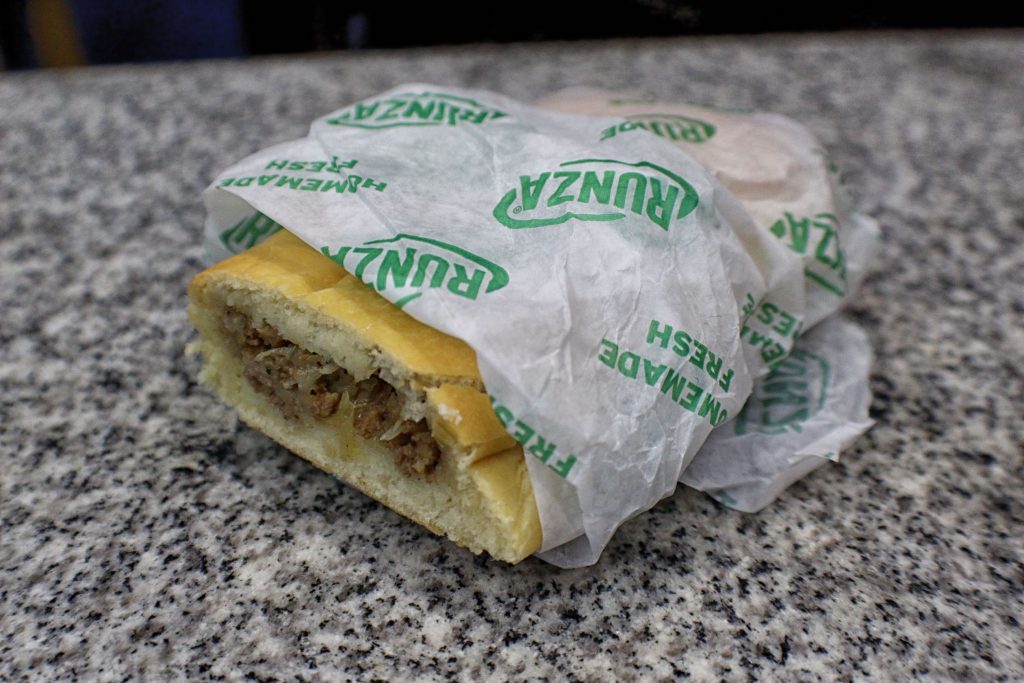
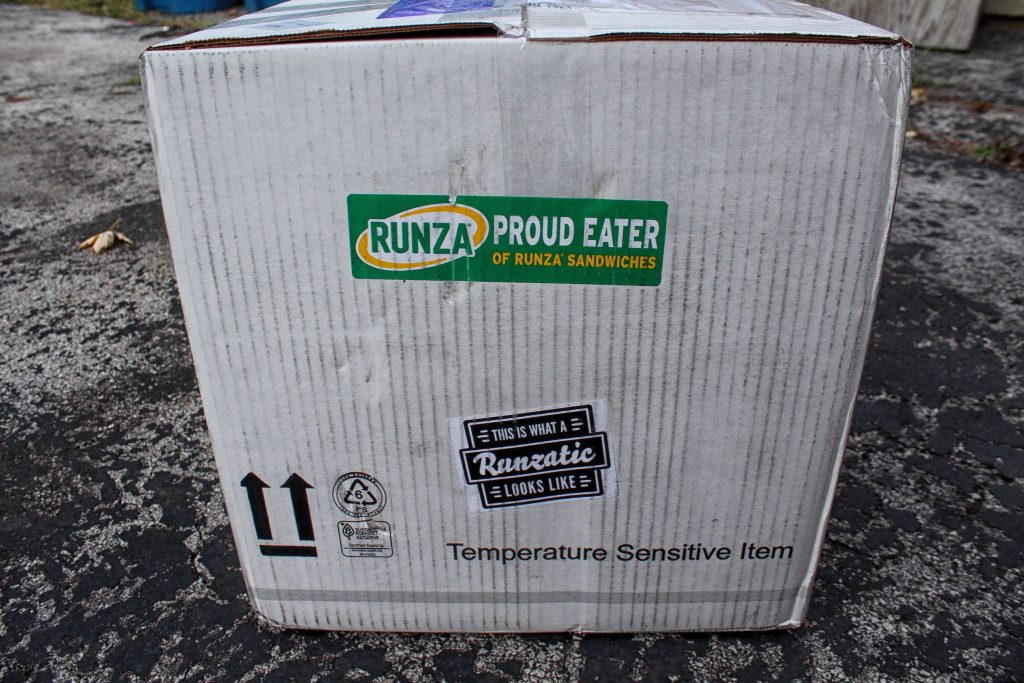
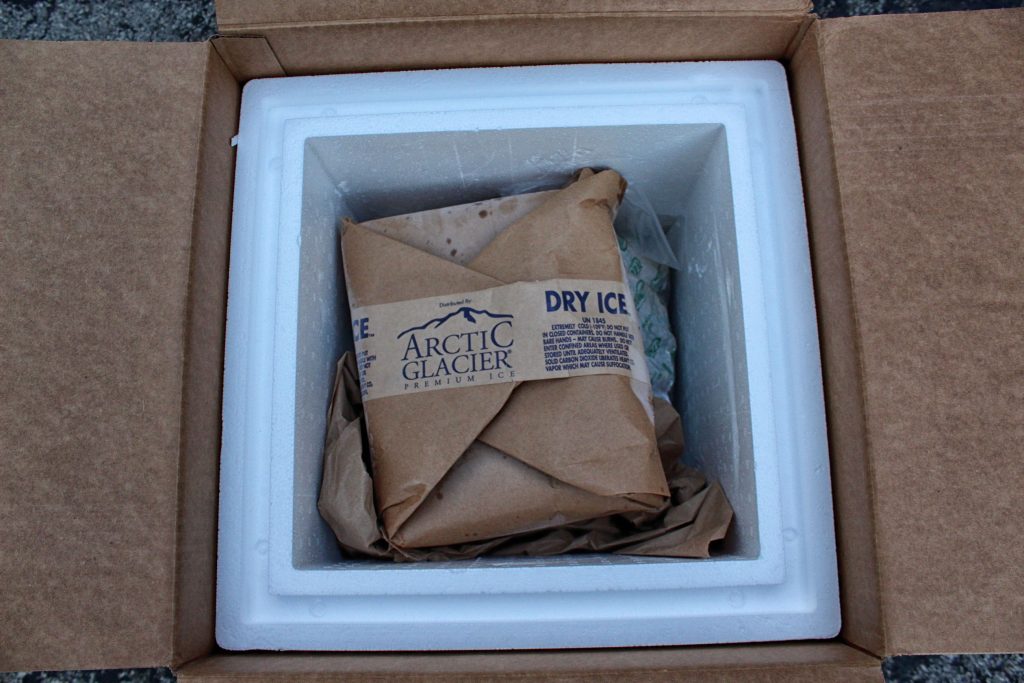
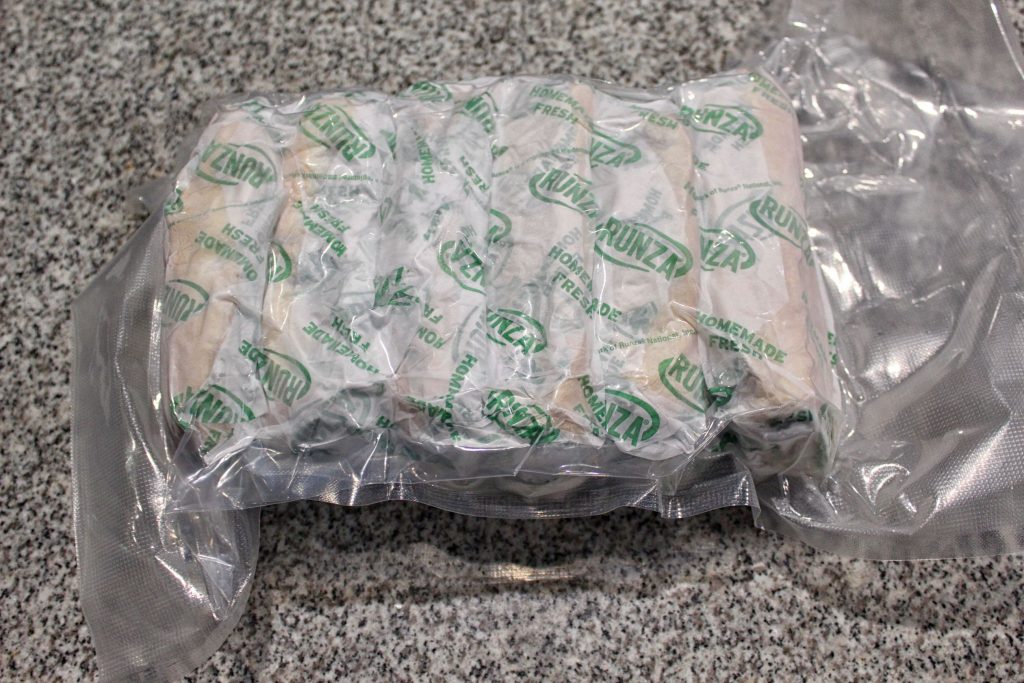
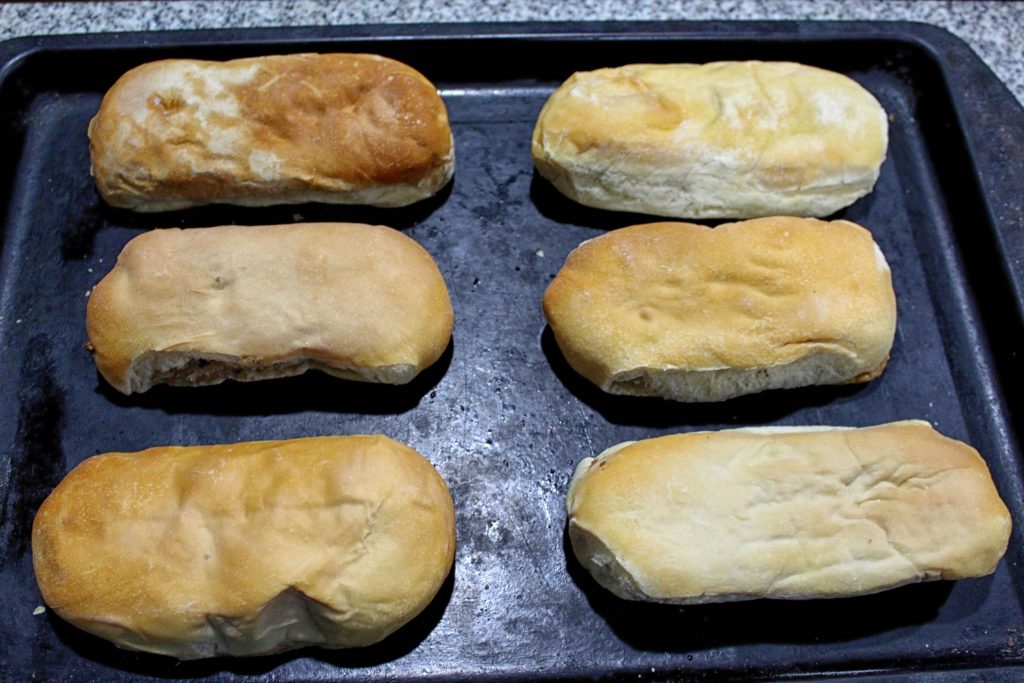
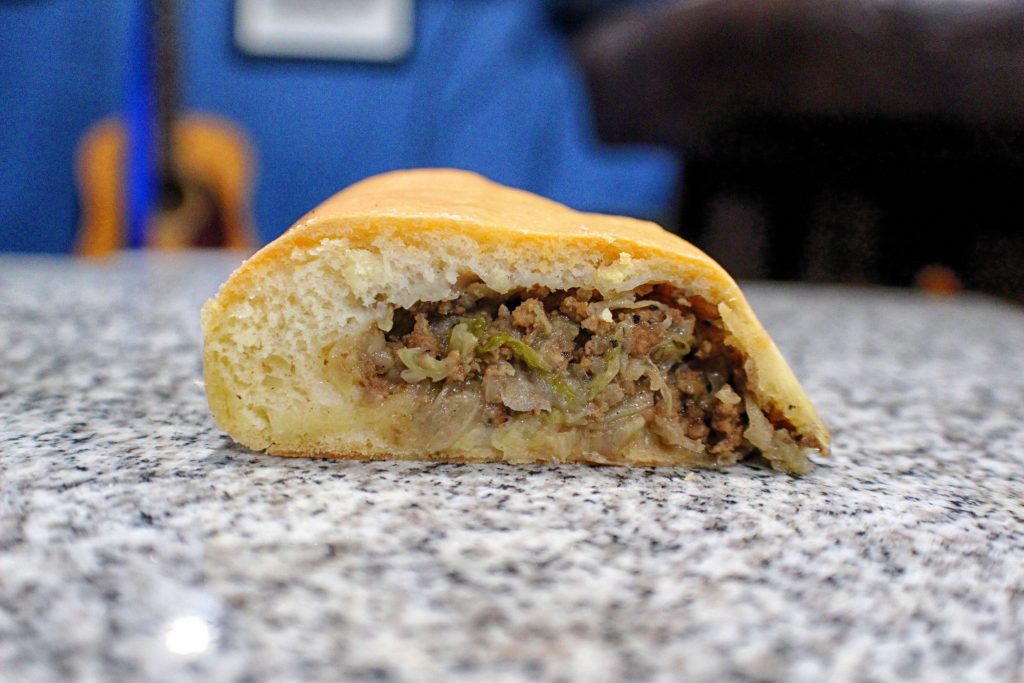
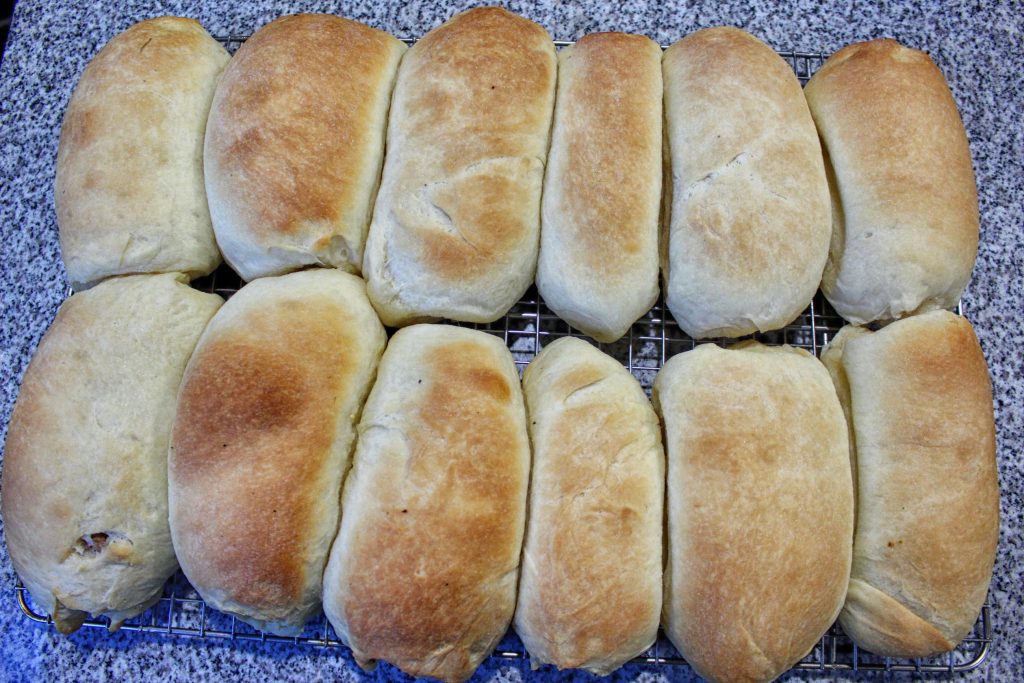
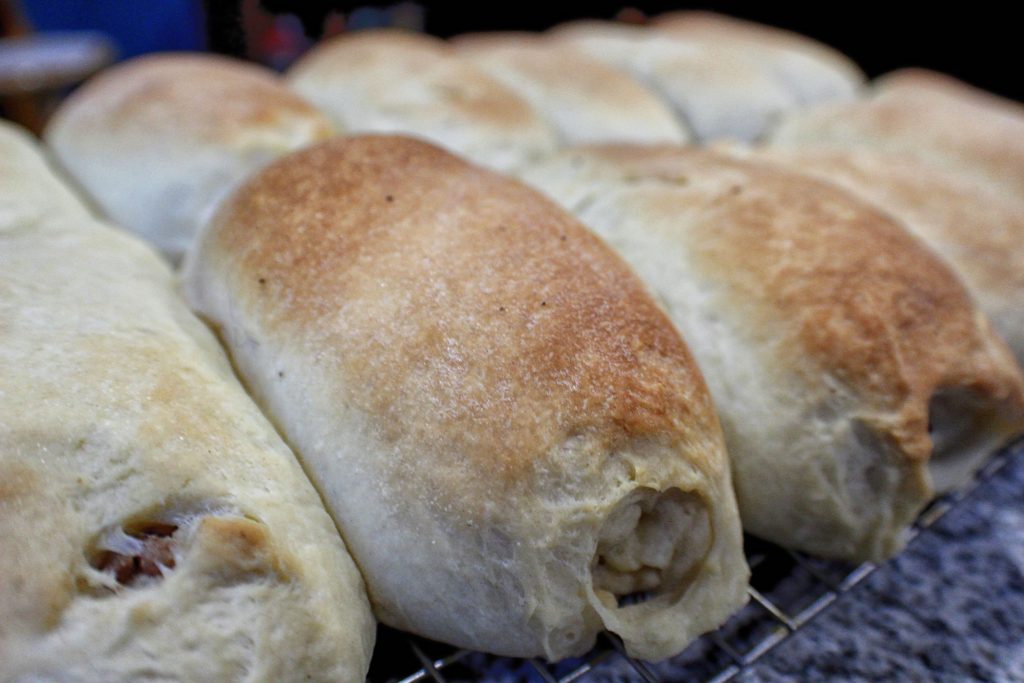
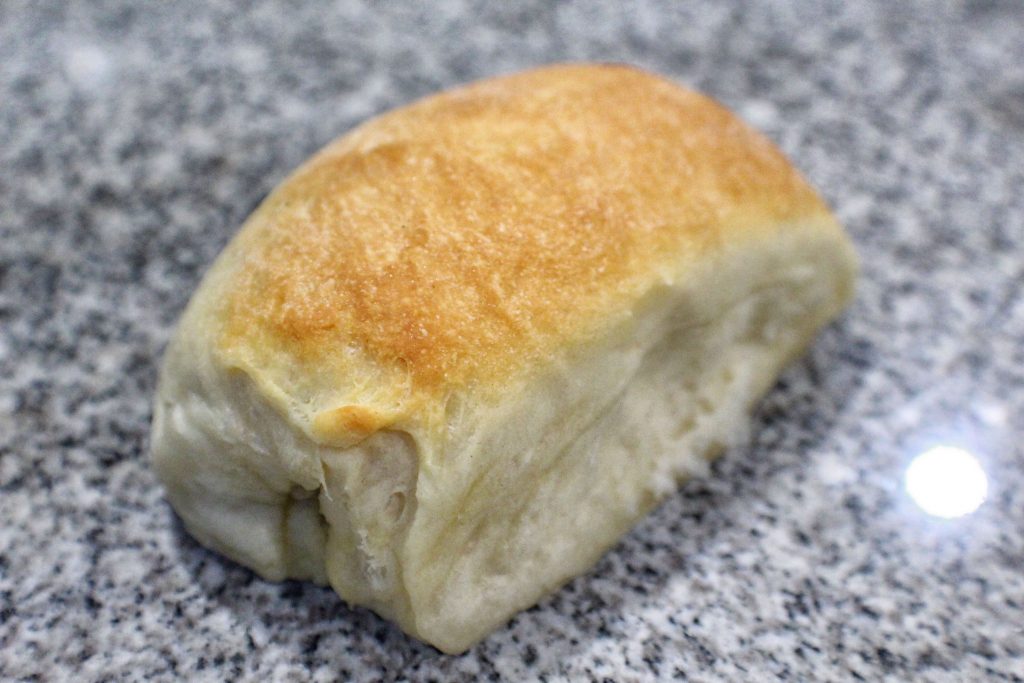
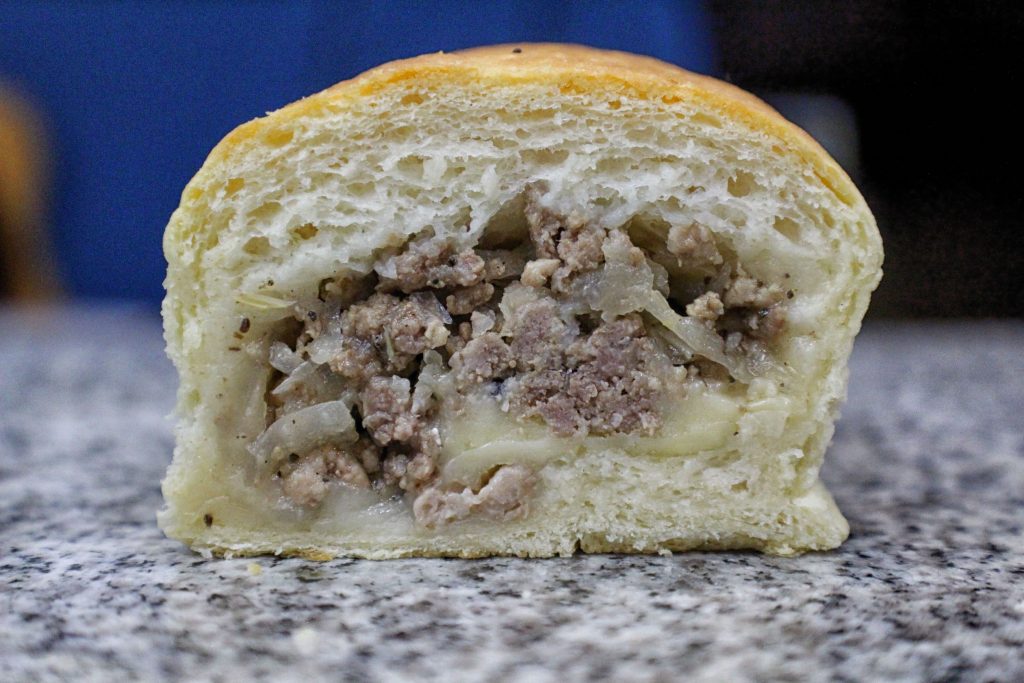
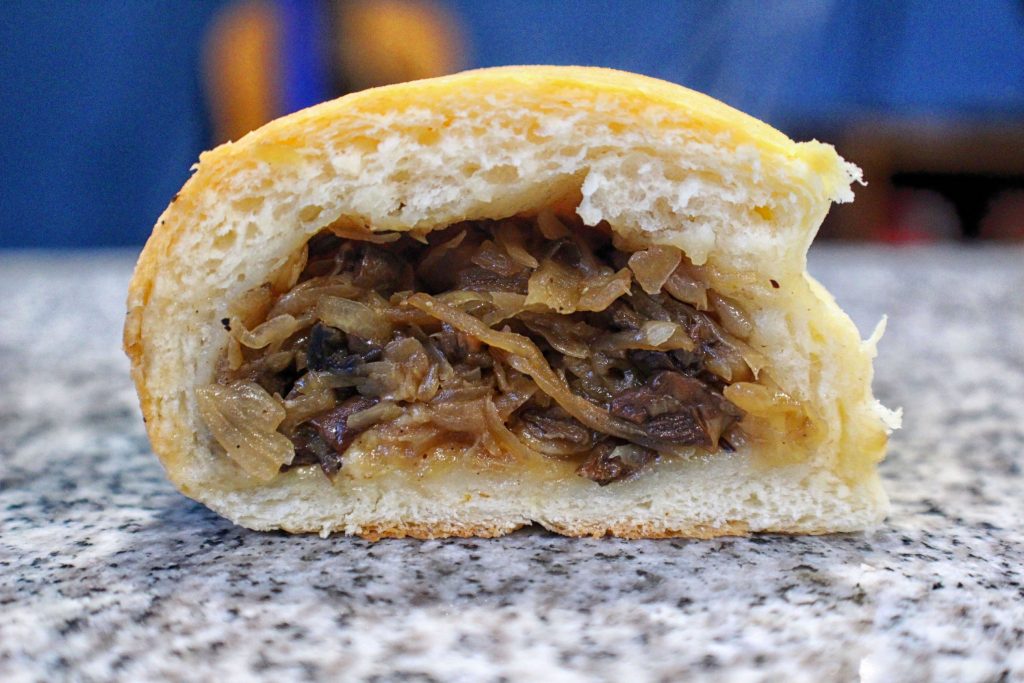
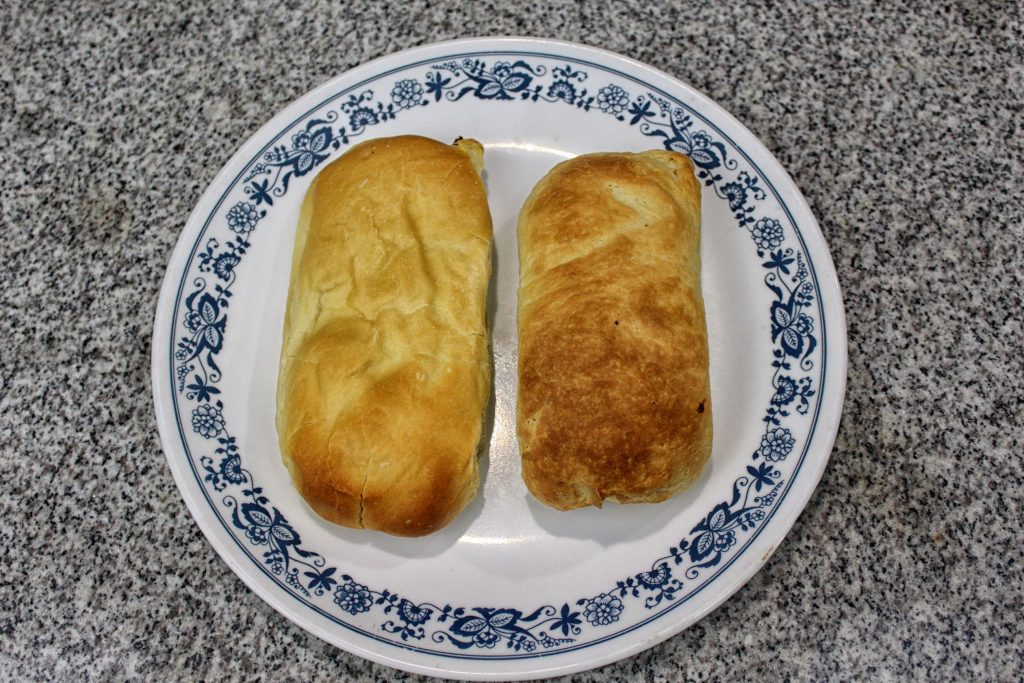
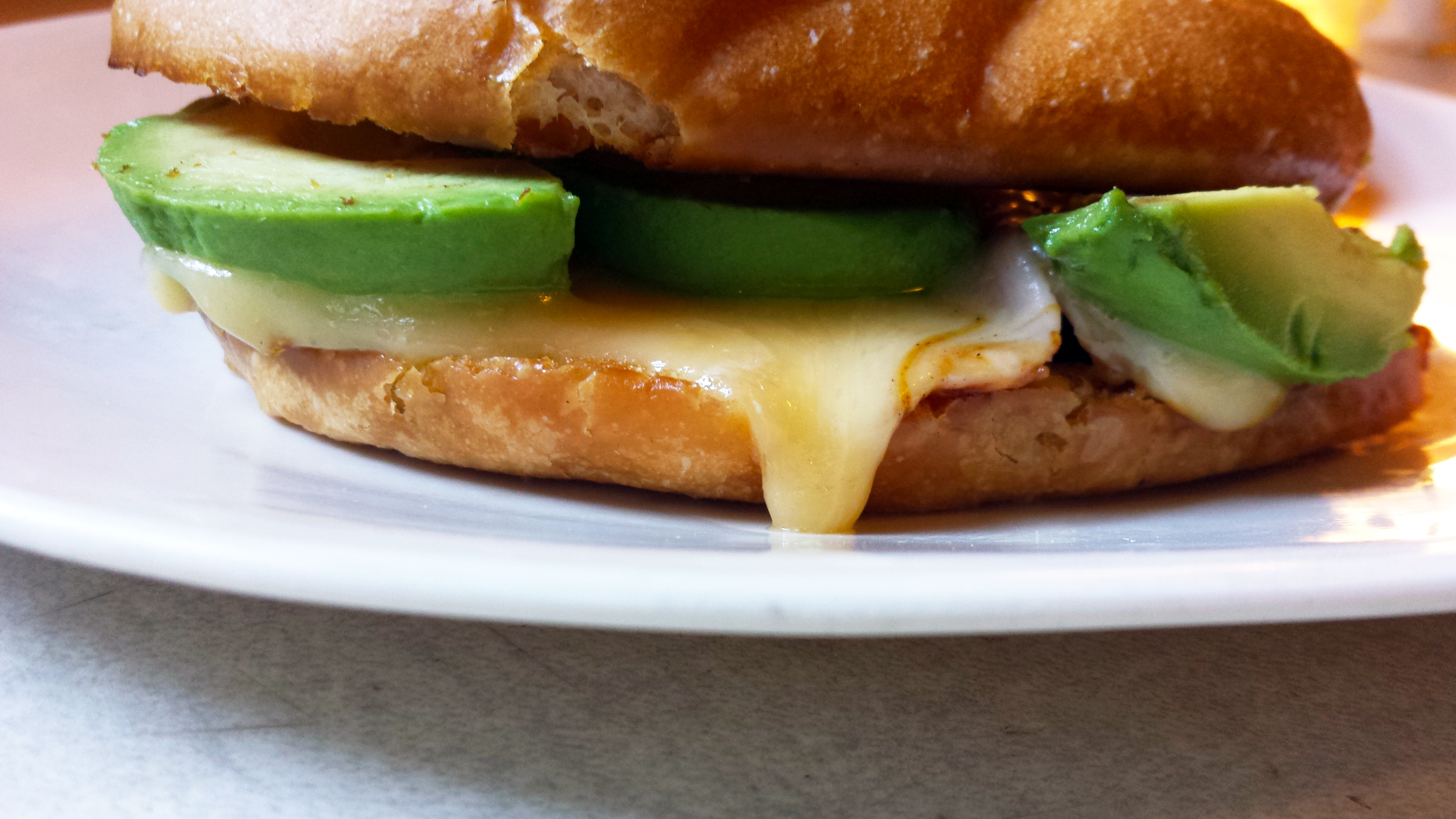


The first thing you did wrong was purchased frozen. They need to be fresh out of the oven out of a Runza shop that has good management that ensures that the runzas they make are of the best quality and as fresh as possible.
If you get a nasty Runza you went to a shop with bad management.